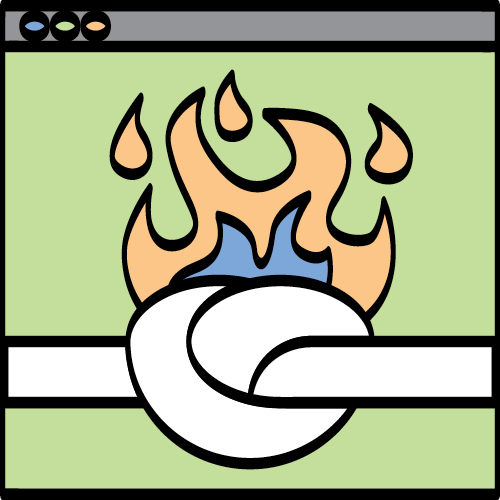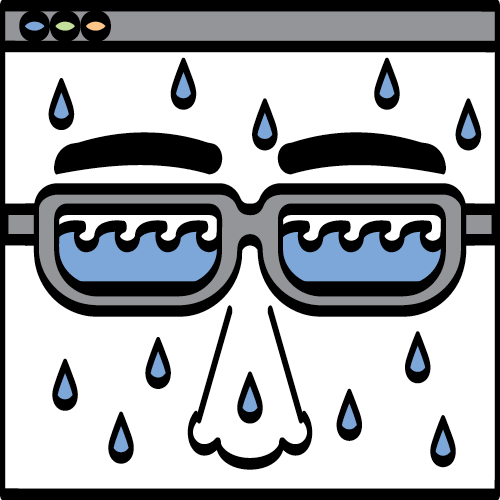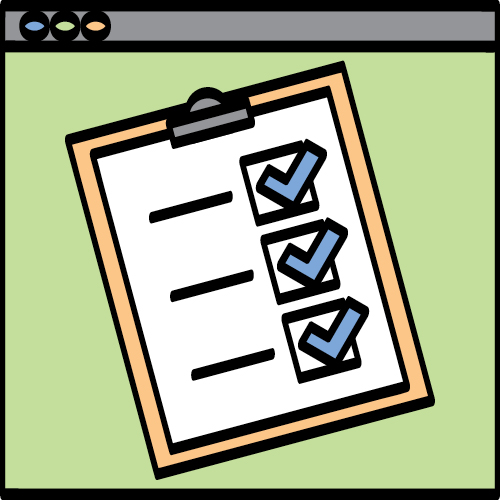Saturday, Oct. 3. How it started
Fitness plans made over beer aren’t ones you’d think would stick, but that’s how it started.
My running coach, also a NAIT Personal Fitness Trainer instructor, met me at an Edmonton brewery in fall 2020 to debrief after a season of training for races ultimately cancelled by COVID-19. We raised our glasses anyway – mindful not to clink – to 1,000 kilometres run just because. And to next year.
In the meantime, though, he had a favour to ask. The program needed its annual volunteer contingent of staff members on which students could practice skills they were learning. Usually, trainee recruits were easy to find. But this year there was a hitch: the pandemic meant that sessions would be virtual. Was I interested?
I hate weight training, and was skeptical about how effective it would be over my sketchy Wi-Fi.
 Not really.
Not really.
I love exercising but hate weight training, and was skeptical about how effective it would be over my sketchy Wi-Fi.
That said, I wasn’t excited about someone watching me fail to reach my full potential anyway. That’s what mirrors are for. Even my running coaching was basically a spreadsheet of distance versus time, and no column for accountability.
But the sun was shining, we were in T-shirts enjoying the fresh air of a patio in October, and the beer was good.
As well, with no access to a gym treadmill, my running mileage was about to dwindle to something more like metre-age. My alternative winter activity, squash, a game of tight spaces and uncomfortable proximities, might as well be COVID-19’s national sport.
The training assessments would start next week, my coach said. I thought for a moment. Should we have another pint? I asked.
Friday, Oct. 9. A low bar
 I was paired up with second-year Personal Fitness Trainer student Jarryd Reed. He's like a trainer from central casting: young, confident, blonde, shaped like the top of an hourglass.
I was paired up with second-year Personal Fitness Trainer student Jarryd Reed. He's like a trainer from central casting: young, confident, blonde, shaped like the top of an hourglass.
But he knew the names of body parts I’ve never heard of but soon would, daily: adductors, scapula, fascia, etc., etc. He quickly got on with determining where to set the bar for our two months together.
It resembled a tripping hazard.
“I think we’re both going to learn a lot from this.”
Reed recorded how high I could jump, how many pushups I could do before failing, observed me toppling over during the “bird dog” (try touching your elbow to the parallel knee when on all fours and see how it goes), and counted off what few seconds I could balance on one foot with my eyes closed.
Perhaps most importantly, though, Reed noticed how my knees bent toward each other when I crouched into a squat, indicating a lower-body imbalance that would get uglier as I aged.
With my shortcomings benchmarked, he smiled from my laptop screen. “I think we’re both going to learn a lot from this,” Reed said.
Tuesday, Oct. 20. Hello, pain
 Before our first session, we talked goals. A personal trainer, I quickly discovered, is entrusted with extraordinary responsibility. Not just about your body, but about identity.
Before our first session, we talked goals. A personal trainer, I quickly discovered, is entrusted with extraordinary responsibility. Not just about your body, but about identity.
I want to run faster, I told Reed, and hit a squash ball harder. That is, I want to be a faster runner, to be a winning squash player. I want to be better than I am.
And I wanted Reed to make me that way without my having to know the names of any of those body parts I’ve never cared about.
He was happy to oblige, starting with my least favourite activity, stretching, and my least favourite form of it, myofascial rolling. It involves pressing knots in muscles and connective tissue against a foam roller to create horrible burning sensations that, with pressure, eventually, slowly, extinguish. It’s become routine in advanced exercise and athletics.
Reed explained that rolling stimulates the release of a chemical that’s meant to help loosen up muscles and “keep your limb from being ripped off.”
This gave me little comfort about what was to come.
Thursday, Oct. 22: The great imbalance
 What was to come, it turns out, was more subtle. Reed is a devotee of corrective exercise and functional fitness – fixing muscle misalignments through more natural movements instead of the piston-like repetition of conventional weight training.
What was to come, it turns out, was more subtle. Reed is a devotee of corrective exercise and functional fitness – fixing muscle misalignments through more natural movements instead of the piston-like repetition of conventional weight training.
In high school, a knee injury ended his promising run at football. After surgery, corrective exercise cut Reed’s recovery time by months, lifting him from a slump brought on by inactivity.
“That’s why I want to teach other people. I think it’s so amazing that you can do the proper movement mechanics and all the stars align.”
“Once your lower body is in alignment, it works a lot better.”
That’s why, in addition to tailoring a program for me that included umpteen shoulder and upper back exercises to improve my squash swing, he zeroed in on my own knees. He confirmed what he saw in the assessment using a simple test. With a broomstick held a couple inches in front of my middle toes, I bent into a squat. Rather than hitting the stick, my knee swung inward, missing it by a good inch and a half.
We paused for some rolling and stretching, focusing on the hamstrings and inner thighs, or adductors. Then we tried again. My knee hit the stick.
Now, we just needed to make that happen without stretching. “Once your lower body is in alignment, it works a lot better,” said Reed.
Tuesday, Nov. 3. Getting sweaty
 Not every day was subtle. The night before a session, as we began to settle into a routine of exercises, Reed sent me a text:
Not every day was subtle. The night before a session, as we began to settle into a routine of exercises, Reed sent me a text:
Got a sweaty workout planned for you👍
Plyometrics is a type of exercise that conjures up memories of days as a kid running and jumping at the playground, but robs them of their fun.
Reed had me put an ottoman in the centre of the room, then jump onto it, over to the other side, then jump back on, backwards, then off to where I started. Twelve reps a side, 30-second break, four sets.
Then we did the same but side to side, slalom like, four more sets. Then, as if still fresh, we (that is, I) switched to pushups with a twist: starting with your hands forming a diamond under your chest, I launched up to land on adjacent blocks, three-inches high, then down again; eight reps of up and down, three sets. Or try, that is.
At the end, I removed my glasses, the lenses pooled with sweat.
“You’re looking a little fatigued, which is good,” Reed said. “We don’t want to just be going through the motions here.”
Tuesday, Nov. 9: Better living through failure
 With the routines set, we agreed that I’d do them alone after work and use our early-morning sessions for questions and concerns about what I wasn’t quite getting. Like single-leg deadlifts.
With the routines set, we agreed that I’d do them alone after work and use our early-morning sessions for questions and concerns about what I wasn’t quite getting. Like single-leg deadlifts.
These are a dreadful, circus-like combination of strength, agility and balance. One one foot, you hinge forward at the hip while gripping a small weight. Back stays straight, opposite leg rises and extends, hamstrings and glutes buzz. Or they should.
When I showed Reed my form, he shouted, “Stop, stop, stop!” through the laptop. My back wasn’t straight, I wobbled, my legs bent offensively.
“We’ll progress to that,” he said in a tone that suggested maybe we wouldn’t. In any case, we’d switch to traditional deadlifts, with both feet on the ground.
He shouted, “Stop, stop, stop!” through the laptop.
That felt like failure; we’d yet to abandon an exercise due to my inability. But as we moved on to successfully fix other moves, it occurred to me that you have to simply adjust and get on with it. It goes back to the nature of the trainer-client relationship, which is based on vulnerability.
Perhaps even more so than with a spouse or partner, we put our weaknesses on display, admit to them, then deal with them. Try to hide them and the body will eventually betray you, possibly catastrophically. Failure is the only way forward.
Not a bad way to live, really.
Tuesday, Nov. 17. So close yet so far to go
 As I lean into a modified hurdler stretch before the day’s workout, I came as close as I have in years to being able to touch my toes: about four inches.
As I lean into a modified hurdler stretch before the day’s workout, I came as close as I have in years to being able to touch my toes: about four inches.
It doesn’t sound great, but it strikes me as a lot of progress in a short time.
And it surprises me. I’m in my mid-40s, but aging has not fossilized me to the point of complete inflexibility. There’s still time!
Reed excitedly agreed. Then he assigned extra stretches three times a week.
Thursday, Nov. 26. Judgement Day
After two months of working out five days a week – cycling through routines of stretching, rolling, squatting, lunging, and all manner of pushing and pulling – the day arrived to test our progress.
First was the jump test, where I was surprised to gain an inch and a half. Then, pushups, which remained unchanged in quantity, but improved in quality. “Your form became a lot better,” Reed consoled. “It was really crisp.” My balance, eyes open and closed, showed marginal but not insignificant improvement. “That’s something you need to have down pat as you age. You lose it quickly.”
Perhaps training, at least in this way, wasn’t so bad. Even online.
 But the real victory was in the knees.
But the real victory was in the knees.
When Reed watched me squat, I saw his face beam on my laptop. My knee tracked nearly perfectly over my middle toes, rather than turning in.
“Did you have to think about doing that?” Reed asked, a little incredulous. I didn’t. His plan worked. In two months.
They were subtle corrections but Reed was pleased. “In every single assessment there was a component you improved in.”
I was pleased, too. Perhaps training, at least in this way – focused, guided, goal-oriented – wasn’t so bad. Even online. These days, when the world can make you feel like a puppet on a string, what aspects of life can we control? Where can we affect positive and hopefully lasting change?
To my surprise, it was in my living room, alone, with a handful of dumbbells, a broomstick and a foam roller.
Tuesday, Dec. 1. Where it ended
 After the assessment, Reed got back in touch to say that he’d added up our hours and we were short one.
After the assessment, Reed got back in touch to say that he’d added up our hours and we were short one.
“What do you want to do?” he asked. When I didn’t know, he suggested rolling.
For an hour that morning, that’s all we did, starting at the upper back and rolling our way down, lighting little fires and letting them slowly burn out, one by one.
Just as it corrected all the little knots in my body, it continued to correct my impressions of what exercise was, and what it would be for me in the future.
Once we hit our calves, Reed said we’d spend some time on them, covering the middle and sides individually. There’re actually more than one muscle in the calf, he started to explain. Then he paused. “But I won’t get technical.”
“No,” I said, as the burn flared once again, not entirely unpleasantly. “Go ahead. Tell me.”
Equipment essentials
Ever walked into a gym and wondered, Why would I need all this stuff? With a good trainer, you don’t! All you really need, says student trainer Jarryd Reed, are “inexpensive basic workout equipment and tables, chairs, doorways and walls.” These are those basics (all prices approximate):
Also, be sure to have a sturdy pair of shoes, a timer for rest breaks and a towel and some water handy. You may not be at the gym, but you’ll sweat like you are.